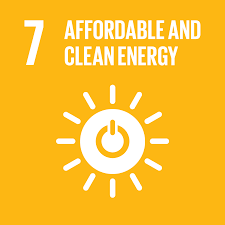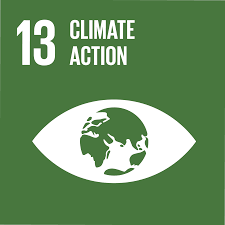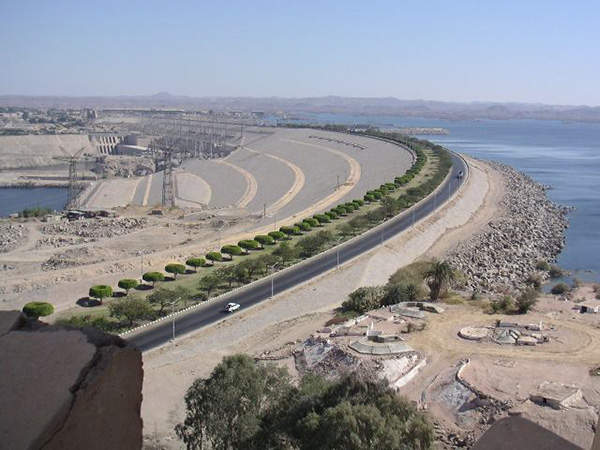Power of the Water, Wind, and Sun
- Tesnim

- May 19, 2021
- 4 min read
The article is focused on the following UN Sustainable Development Goals:
A middle-aged woman carrying a load of 50 kgs of firewood on her bent back. She rushes back home from the forest, dragging her tired and numb legs across the forest floor, panting and stumbling over rocks, so she can get back home before the sun sets. In Ethiopian fairytales and stories, this description of a ‘mother’ appears repeatedly and is worthy enough of being a true cliché. The reality of firewood collection in rural Ethiopia isn’t far from this cliché, after all, stories are just reflections of real life. By 2018, about 70% of the Ethiopian population lived without electricity, and only 30% of health clinics who would presumably need it the most had access to electricity (Kitchlu). Thus, it doesn’t come as a surprise that people turn to their forests instead to provide them with energy.
Whether this energy is clean or not or what effects it may entail do not occur to the minds of most firewood collectors, most probably because they are not educated on environmental matters. Others prioritize feeding hungry mouths in their house over the environment. As forest resources dwindle and the environment is degraded by the day, a need for cleaner and more sustainable forms of energy arises. Currently, Ethiopia is working on installing and distributing several types of sustainable energy sources of which solar, wind, and hydro energy are the most prominent and suitable for the country.
While Ethiopia is classified as a low-income country, its sustainable energy potential is far from being low. Its hydropower potential has been estimated to be 45,00 MW, the second-highest in Africa (“Ethiopia Energy”). With 86% of the rivers in the Blue Nile and suitable land for hydropower plants, Ethiopia is yet to use its resources to their full capacity (“Ethiopia Energy”). From what the rivers of Ethiopia are able to produce, Ethiopians only exploit 17% (Hailu et al.).
The Grand Ethiopian Renaissance Dam (GERD) in Benishangul Gumuz will become the largest hydroelectric power plant in Africa once completed, with an energy capacity of more than 6,000 MW. Extensive projects such as these are a beacon of hope in Ethiopia’s energy situation (“Grand Ethiopian Renaissance”)
The same can be said of its solar energy potential. According to energypedia, the country owns high solar energy potential but does not fully harness it. The percentage of solar power exploited in Ethiopia is less than 1% (Hailu et al.). Donors and non-profit organizations have been trying to install PV (photovoltaic systems) in Ethiopia, but due to lack of proper logistics such as skills, market, and policies, their efforts have proven to be unsuccessful. However, projects, such as those implemented by MEKETA, a non-profit organization, give hope to the country in acquiring clean and sustainable energy. In addition, the country is on the way to build 500 MW of solar energy with the help of Scaling Solar, being the fourth country in Africa to do so (“Ethiopia and Renewable”). Other projects targeting installing solar energy have been implemented in Metehara and Danakil Depression.
“Ethiopia has good wind energy resources…Its wind energy potential is estimated to be 10,000 MW,” says energypedia, generally assessing the capacity of Ethiopia in generating this type of clean energy. Wind energy capacity varies in different regions and climates of the country. Despite the abundance of wind energy, Ethiopia currently uses only 1% of it (Hailu et al.). Nevertheless, Ethiopia still makes use of wind farms such as Ashegoda.
Ashegoda 120MW wind farm near Mekelle (Reve)
Affordable and clean energy is the seventh UN SDG goal. By 2030, the UN plans to get affordable, reliable, and modern energy for all. So far, the UN has conducted 696 actions working towards this sustainable development goal (“THE 17 GOALS”). But the progress being made now needs to speed up to reach the goal by 2030. The changes in energy sources we want to see in Ethiopia’s future are also part of SDG 13, which deals with climate action. By using clean and sustainable energy, we can cut global greenhouse gas emissions and reduce climate change.
As young people, what we can do to help the conversion from unsustainable energy to renewable and clean energy may seem limited but is not insignificant. Especially in a country like Ethiopia where awareness is at the root of the problem, the youth can engage in several activities to educate themselves and other people about the multiple benefits of using renewable energy. Joining environmental organizations, being active participants in the community’s environmental activities, and showing support for programs encouraging environmental sustainability are good signs that we are willing and working to make a change. Even by doing something as simple as limiting our electricity use, we can contribute to the shortage of energy across the country. The change starts from our homes, where we can change our little habits that would otherwise grow to become global problems.
Works Cited
“Ethiopia Energy Situation.” Energypedia,
energypedia.info/wiki/Ethiopia_Energy_Situation#:~:text=Ethiopia%20is%20endowed%20with%20renewable,energy%20demand%20is%20increasing%20enormous.
“Ethiopia and Renewable Energy: A Sustainable Choice.” Enel Green Power, 13 Feb. 2019, www.enelgreenpower.com/stories/articles/2019/02/ethiopia-renewable-energy-a-sustainable-choice.
“Grand Ethiopian Renaissance Dam Project, Benishangul-Gumuz.” Water Technology,
www.water-technology.net/projects/grand-ethiopian-renaissance-dam-africa/.
Hailu, Ashebir Dingeto, and Desta Kalbessa Kumsa. “Ethiopia Renewable Energy Potentials
and Current State.” AIMS Energy, 2021,
www.aimspress.com/article/doi/10.3934/energy.2021001?viewType=HTML.
Kitchlu, Rahul. “Ethiopia's Transformational Approach to Universal Electrification.” World
Bank, 8 Mar. 2018, www.worldbank.org/en/news/feature/2018/03/08/ethiopias-
transformational-approach-to-universal- electrification#:~:text=About%2070%20percent%20of%20the,clinics%20have%20access%20t
o%20electricity.
Reve. “Ashegoda Wind Farm in Ethiopia with Vergnet’s Wind Turbines.” REVE News of the
Wind Sector in Spain and in the World, 25 July 2014,
www.evwind.es/2014/07/25/ashegoda-wind-farm-in-ethiopia-with-vergnets-wind-
turbines/46658
“THE 17 GOALS | Sustainable Development.” United Nations, United Nations,
sdgs.un.org/goals.
“Understanding Sustainable Development Goal 7 (SDG7).” Sustainable Energy for All, 16
Mar. 2021, www.seforall.org/data-and-evidence/understanding-sdg7#:~:text=Sustainable%20Development%20Goal%207%20(SDG7)%20calls%20for%20%E
2%80%9Caffordable%2C,the%20foundation%20for%20our%20work%3A&text=Increase%20s
ubstantially%20the%20share%20of,of%20improvement%20in%20energy%20efficiency.










Comments